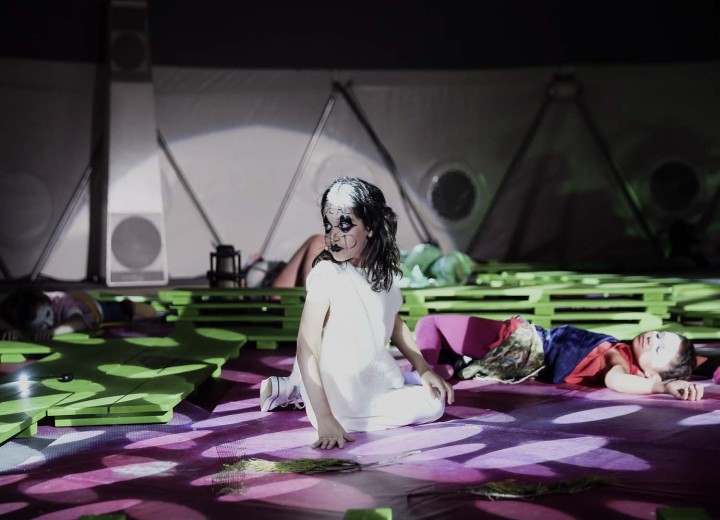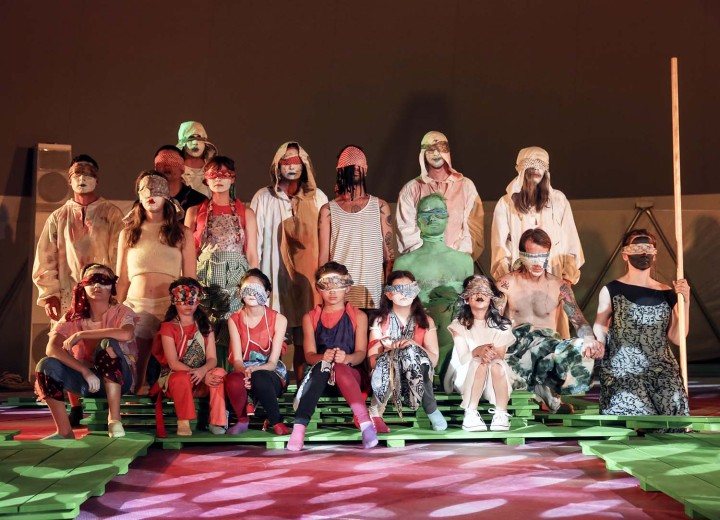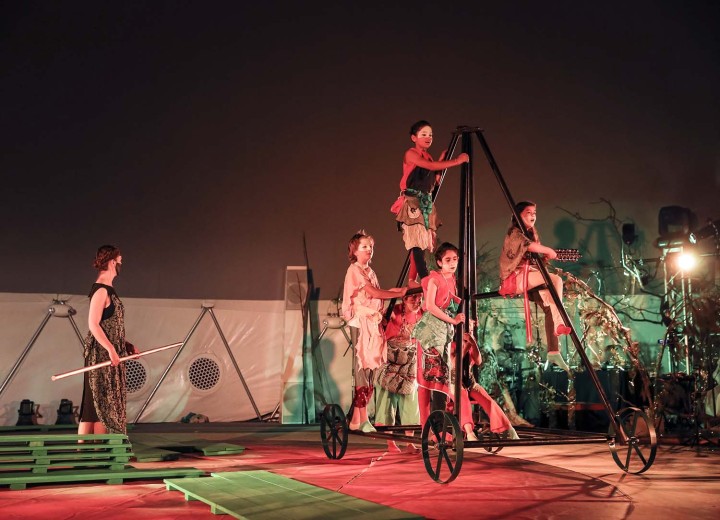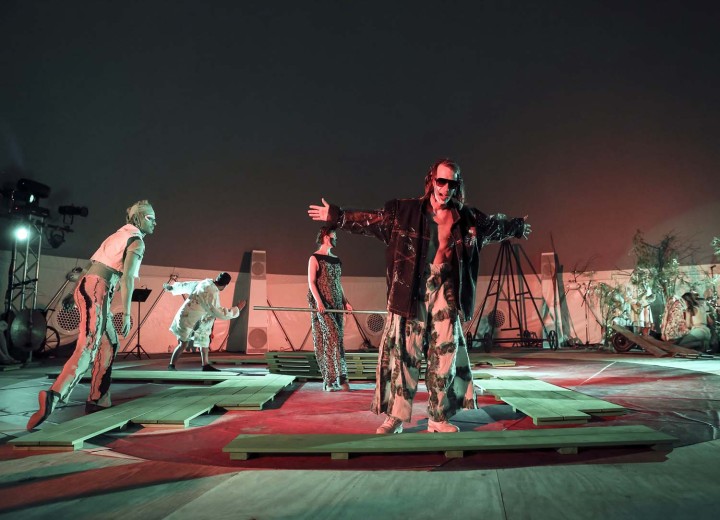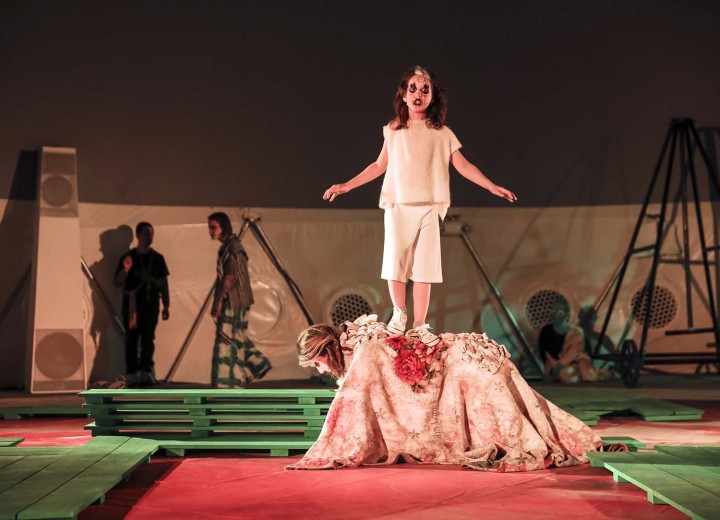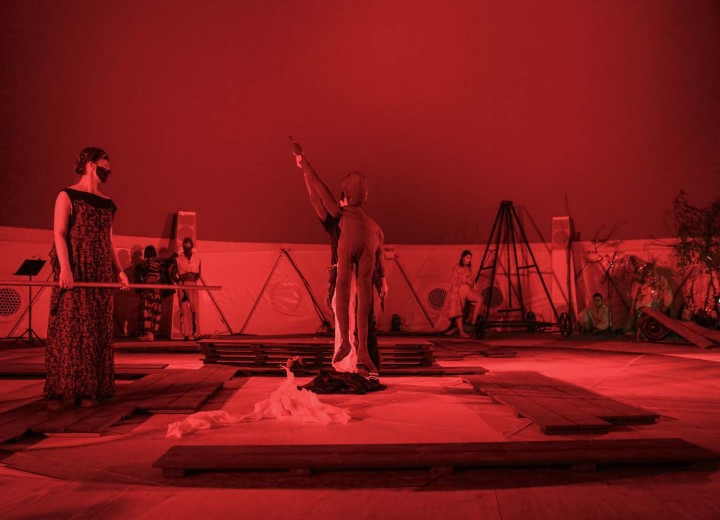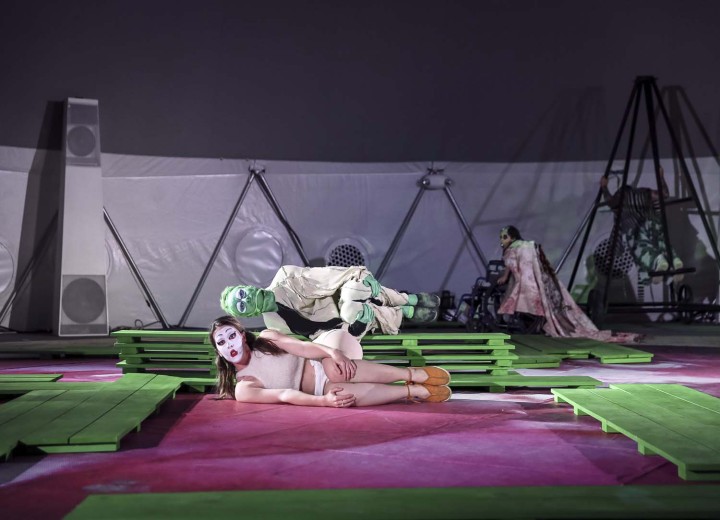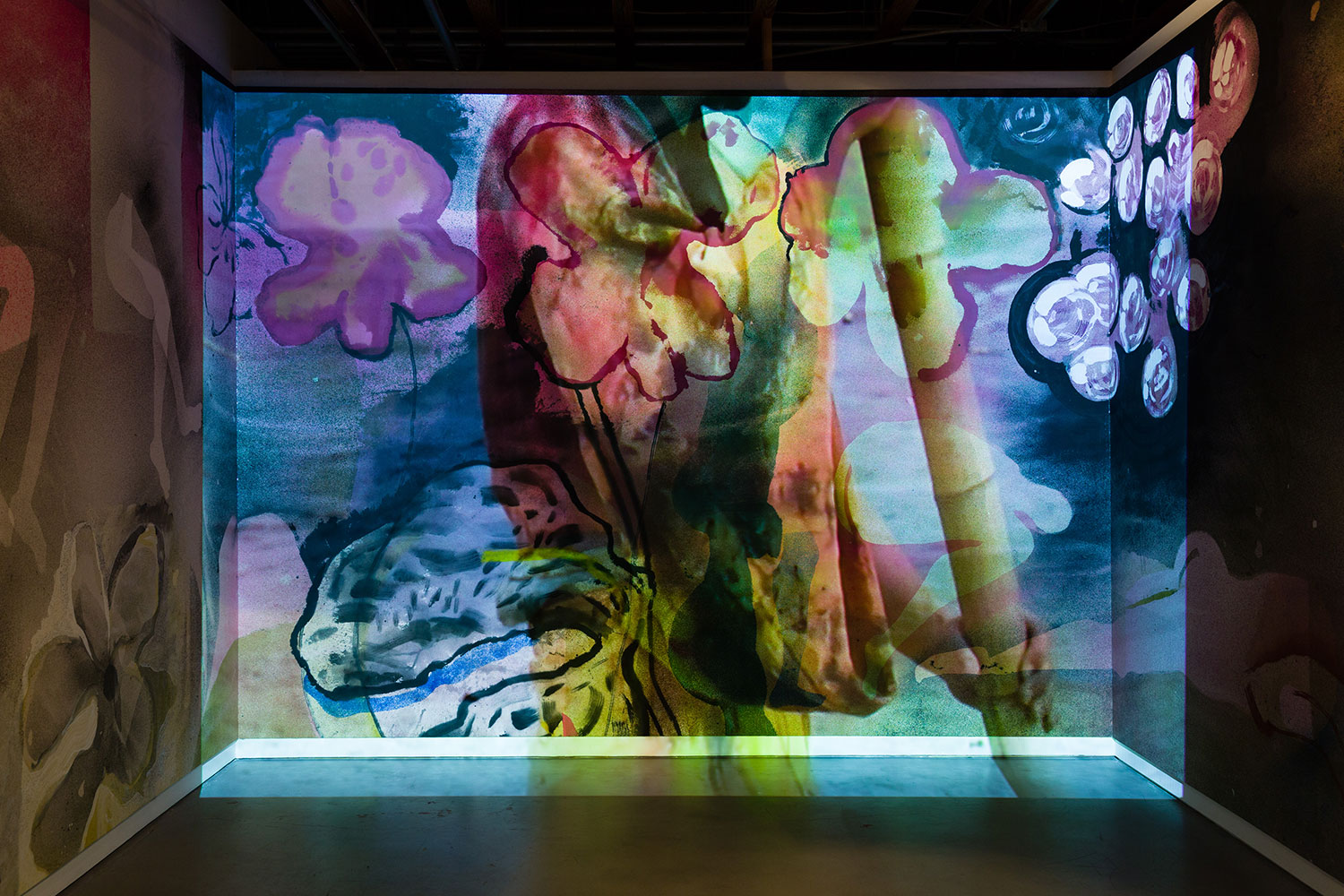The flap of a butterfly’s wing in one location — or so the theory goes — may bring about a hurricane in another. And so when Tobias Madison and Matthew Lutz-Kinoy’s recent live performance of Rotting Wood, the Dripping Word: Shūji Terayama’s Kegawa No Marii at MoMA PS1 began with a joyous flutter of insects — released outdoors from white boxes by a scantily clad male character painted Kermit green — it may well have changed the universe forever.
Yet once inside the PS1 dome, the audience was treated to a reminder of Terayama’s nonlinear approach, one born of a fascination with speed. “After I started to like things that fly here and there,” said the Japanese playwright and filmmaker in a 1970 conversation with writer Yukio Mishima, “it became impossible for me to build up stories in a very logical way, for example, in a logical way in which reasons and motivations produce results.”
And so Madison, Lutz-Kinoy and Berlin-based director Ariel Efraim Ashbel drew upon Noh staging conventions — multiple perspectives, fragmented viewpoints, lurking demons — to interpret Terayama’s tale of a transvestite, the titular La Marie-Vison, who keeps his eighteen-year-old son locked away from the world (young Kin’yai is allowed to chase butterflies, but they are confined to the living room). For much of the performance, the circular stage was limned by one of the “six ghosts of beautiful girls”: draped in a quilt, the wheelchair-bound child propelled themselves in a slow loop around the illuminated action.
Accompanied by a hazy, warped live score by the band STEIKETO, the work unfurled with a dreamlike quality emphasized by mirrored movements and sparing dialogue that tracked a shift from the view of brash Marie (a scenery-chewing William Z. Saunders) that “appearance is paramount over everything” to a closing remark that “everything on the surface is unreal.” Complicating this polarity were the outstanding costumes. Fashion label Eckhaus Latta wrapped and draped the performers in washed, painted and layered textiles that both distinguished their characters and bound them together in a world of rot and delirium, ecstasy and butterflies.

